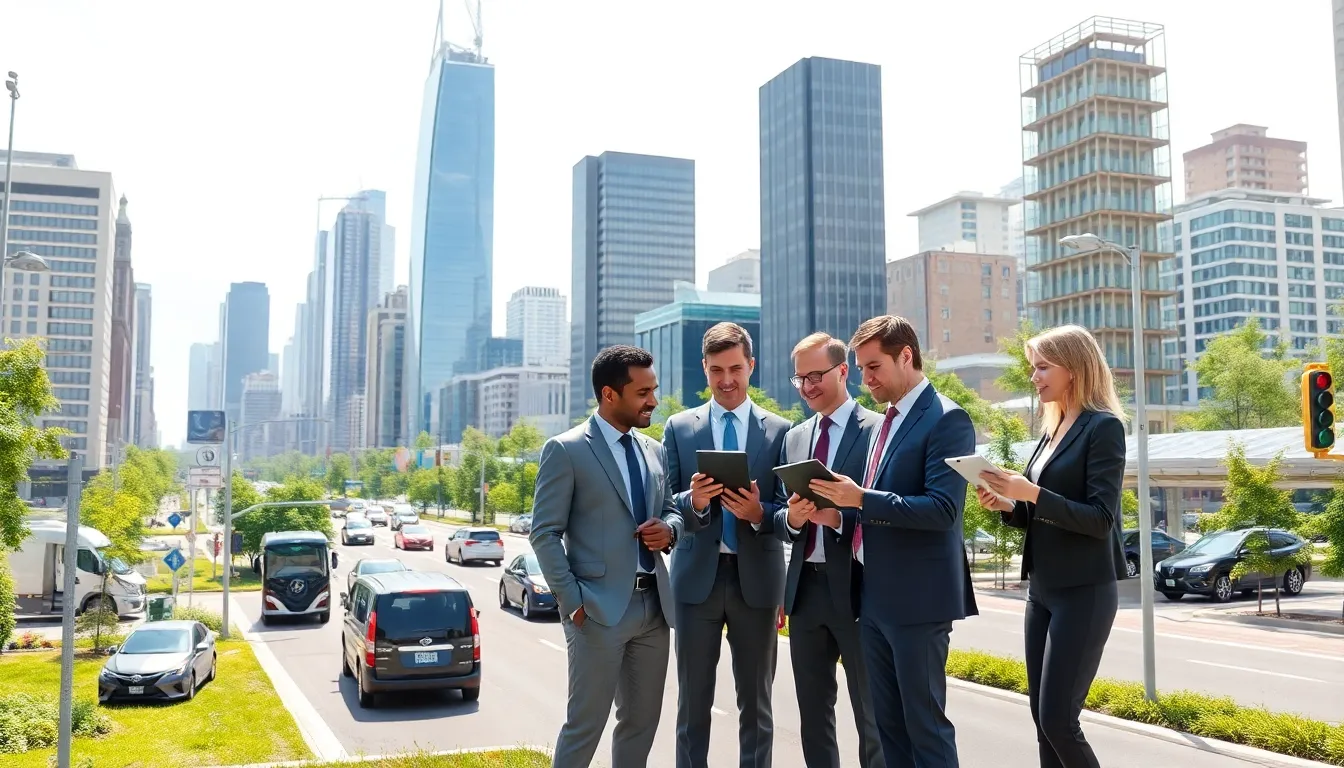Imagine a city where traffic lights adjust to real-time traffic conditions, where streetlights dim when no one is around, and public services are so efficient that you can almost hear the applause of residents. Welcome to the future of urban living with the Internet of Things (IoT), strikingly fabulous and undeniably smart. In a world where technology is racing ahead, smart cities are not just a figment of our imagination: they are becoming our new reality. Get ready to explore how IoT is transforming our urban environments into more livable, efficient, and sustainable places.
Table of Contents
ToggleUnderstanding Smart Cities

Definition and Importance
Smart cities are urban areas that leverage advanced technologies to enhance the quality of life for their residents. This transformation is tied to utilizing vast amounts of data and IoT. With smarter infrastructure and services, cities aim to become more efficient, sustainable, and safe for their inhabitants. Their importance cannot be overstated: these cities are designed to manage resources better, reduce environmental impact, and improve the overall well-being of their communities.
Key Components of Smart Cities
Various components work together to create a smart ecosystem. From intelligent transportation systems and energy-efficient buildings to broadband connectivity and public safety initiatives, each plays a vital role. Sensors gather real-time data, enabling cities to optimize services like traffic flow and energy use. As cities rapidly expand, integrating these smart solutions becomes imperative for a sustainable future.
The Role of IoT in Smart Cities
Enhancing Urban Infrastructure
Urban infrastructure stands to benefit immensely from IoT applications. Imagine sensors monitoring road conditions or detecting when a light bulb is about to burn out. Such technology allows cities to address maintenance issues before they escalate, enhancing reliability and reducing costs. Cities that carry out IoT solutions can experience improved service delivery, creating a seamless experience for residents and businesses alike.
Improving Public Safety
Cities equipped with IoT technologies can also ensure a more secure environment. Smart surveillance systems can monitor public areas, while connected emergency services can respond faster to incidents. For instance, fire departments can track fire hydrant conditions in real-time, ensuring that they are always operational when emergency calls arise. Residents feel safer knowing technology supports their safety through proactive measures.
Optimizing Transportation Systems
Smart Traffic Management
Traffic congestion is a common urban nightmare, but IoT-led solutions are making headway. Smart traffic lights can adapt according to traffic conditions, enhancing flow and reducing travel times. Cameras and sensors track vehicle movement and suggest alternate routes, alleviating congestion in real time. As these technologies evolve, they offer the promise of smoother, stress-free commutes for everyone.
Public Transport Innovations
The public transport sector is also undergoing a smart revolution. Buses and trains equipped with GPS track their locations, allowing riders to receive real-time updates. Also, mobile apps provide users with schedules and alerts, making public transportation more accessible and efficient. Innovations, such as contactless payments and smart ticketing systems, further enhance user experiences.
Environmental Monitoring and Sustainability
Energy Management Solutions
Energy conservation is imperative in urban planning. Smart grids equipped with IoT technology enable cities to monitor usage in real-time and adjust supply accordingly. Renewable energy sources can be seamlessly integrated into the grid, and residents can use smart meters to track energy consumption, leading to more conscious usage patterns.
Waste Management Strategies
Waste management is another area where IoT shines. Smart bins equipped with sensors can notify waste management services when they’re full, optimizing collection routes and reducing costs. This tech-driven approach not only saves money but also encourages recycling and proper waste disposal, fostering a cleaner environment.
Challenges and Considerations
Data Privacy and Security Concerns
As cities embrace IoT technologies, data privacy becomes a pressing concern. The vast amount of data generated raises questions about security and governance. What measures are in place to protect citizens’ information? Absolutely, cities need robust cyber defenses to prevent breaches that could compromise personal data. Transparency and accountability will play key roles in fostering trust among residents.
Interoperability and Standards Issues
The integration of various IoT technologies presents its challenges. Different manufacturers may use proprietary systems, leading to interoperability issues. Establishing clear standards and protocols is essential for seamless functionality and communication between devices. As smart cities continue to emerge, addressing these challenges will be crucial to build a cohesive smart ecosystem.
Future Trends in IoT for Smart Cities
Emerging Technologies and Innovations
Looking ahead, the future of IoT in smart cities appears promising. Innovations such as 5G technology will enable faster data transfer, enhancing real-time applications in urban environments. Besides, artificial intelligence will play a significant role in analyzing data patterns, helping decision-makers create more efficient city services.
The Role of Citizens in Smart City Development
Interestingly, citizens play a pivotal role in the evolution of smart cities. Engaging communities in decision-making processes encourages active participation. Citizens can provide feedback and ideas, leading to more user-friendly services. Leveraging citizen input ensures that smart city initiatives align with resident needs, creating a sense of shared ownership.





